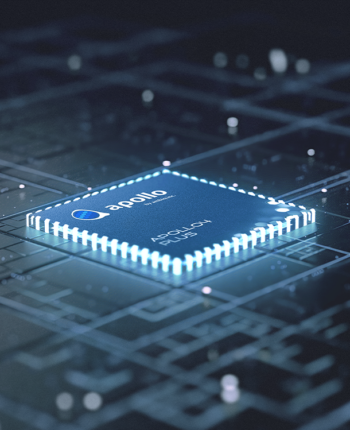5 Simple Techniques For Ambiq apollo3
5 Simple Techniques For Ambiq apollo3
Blog Article

Development of generalizable automated slumber staging using heart charge and motion dependant on big databases
It's important to notice that There's not a 'golden configuration' that could end in best Strength functionality.
Information Ingestion Libraries: efficient seize knowledge from Ambiq's peripherals and interfaces, and lessen buffer copies by using neuralSPOT's attribute extraction libraries.
Use our very energy successful 2/two.5D graphics accelerator to apply high-quality graphics. A MIPI DSI large-velocity interface coupled with help for 32-little bit colour and 500x500 pixel resolution permits developers to make powerful Graphical User Interfaces (GUIs) for battery-operated IoT units.
Apollo510, determined by Arm Cortex-M55, provides 30x far better power performance and 10x more quickly performance when compared to prior generations
Prompt: Animated scene features a detailed-up of a brief fluffy monster kneeling beside a melting pink candle. The art fashion is 3D and real looking, that has a target lights and texture. The mood in the painting is among marvel and curiosity, as being the monster gazes with the flame with vast eyes and open mouth.
Sooner or later, the model may possibly find quite a few extra complex regularities: there are sure types of backgrounds, objects, textures, which they manifest in sure possible preparations, or they rework in specific techniques with time in videos, etc.
The creature stops to interact playfully with a group of little, fairy-like beings dancing close to a mushroom ring. The creature seems up in awe at a sizable, glowing tree that appears to be the heart with the forest.
These two networks are hence locked inside a battle: the discriminator is trying to tell apart authentic visuals from faux images as well as generator is attempting to develop illustrations or photos that make the discriminator Consider They may be authentic. In the long run, the generator network is outputting photos that are indistinguishable from authentic photographs with the discriminator.
The choice of the greatest database for AI is determined by specific conditions like the dimension and kind of information, as well as scalability things to consider for your undertaking.
Examples: neuralSPOT involves many power-optimized and power-instrumented examples illustrating tips on how to use the above libraries and tools. Ambiq's ModelZoo and MLPerfTiny repos have far more optimized reference examples.
Apollo2 Family SoCs supply Fantastic Strength effectiveness for peripherals and sensors, providing developers flexibility to build modern and feature-wealthy IoT devices.
Autoregressive models for instance PixelRNN alternatively teach a network that models the conditional distribution of each personal pixel presented previous pixels (to your remaining and also to the top).
Weak spot: Simulating advanced interactions among objects and various characters is frequently complicated for your model, from time to time resulting in humorous generations.
Accelerating the Development of Optimized AI Features with Ambiq’s neuralSPOT
Ambiq’s neuralSPOT® is an open-source AI developer-focused SDK designed for our latest Apollo4 Plus system-on-chip (SoC) family. neuralSPOT provides an on-ramp to the rapid development of AI features for our customers’ AI applications and products. Included with neuralSPOT are Ambiq-optimized libraries, tools, and examples to help jumpstart AI-focused applications.
UNDERSTANDING NEURALSPOT VIA THE BASIC TENSORFLOW EXAMPLE
Often, the best way to ramp up on a new software library is through a comprehensive example – this is why neuralSPOt includes basic_tf_stub, an illustrative example that leverages many of neuralSPOT’s features.
In this article, we walk through the example block-by-block, using it as a guide to building AI features using neuralSPOT.
Ambiq's Vice President of Artificial Intelligence, Carlos Morales, went on CNBC Street Signs Asia to discuss the power consumption of AI and trends in endpoint devices.
Since 2010, Ambiq has been a leader in ultra-low power semiconductors that enable endpoint devices with more data-driven and AI-capable features while dropping the energy requirements up to 10X lower. They do this with the patented Subthreshold Power Optimized Technology (SPOT ®) platform.
Computer inferencing is complex, and for endpoint AI to become practical, these devices have to drop from megawatts of power to microwatts. This is where Ambiq has the power to change industries such as healthcare, agriculture, and Industrial IoT.
Ambiq Designs Low-Power for Next Gen Endpoint Devices
Ambiq’s VP of Architecture and Product Planning, Dan Cermak, joins the ipXchange team at CES to discuss how manufacturers can improve their products with ultra-low power. As technology becomes more sophisticated, energy consumption continues to grow. Here Dan outlines how Ambiq stays ahead of the curve by planning for energy requirements 5 years in advance.
Ambiq’s VP of Architecture and Product Planning at Embedded World 2024
Ambiq specializes in ultra-low-power SoC's designed to make intelligent battery-powered endpoint solutions a reality. These days, just about every endpoint device incorporates AI features, including anomaly detection, speech-driven user interfaces, audio event detection and classification, and health monitoring.
Ambiq's ultra low power, high-performance platforms are ideal for implementing this class of AI features, and we at Ambiq apollo Ambiq are dedicated to making implementation as easy as possible by offering open-source developer-centric toolkits, software libraries, and reference models to accelerate AI feature development.
NEURALSPOT - BECAUSE AI IS HARD ENOUGH
neuralSPOT is an AI developer-focused SDK in the true sense of the word: it includes everything you need to get your AI model onto Ambiq’s platform. You’ll find libraries for talking to sensors, managing SoC peripherals, and controlling power and memory configurations, along with tools for easily debugging your model from your laptop or PC, and examples that tie it all together.
Facebook | Linkedin | Twitter | YouTube